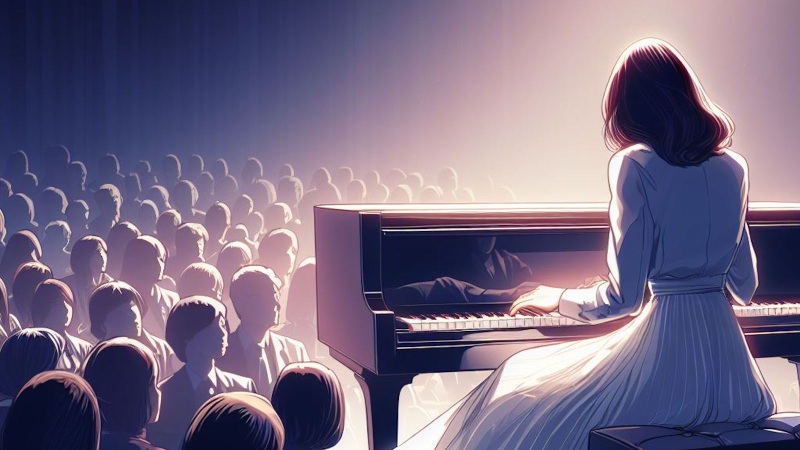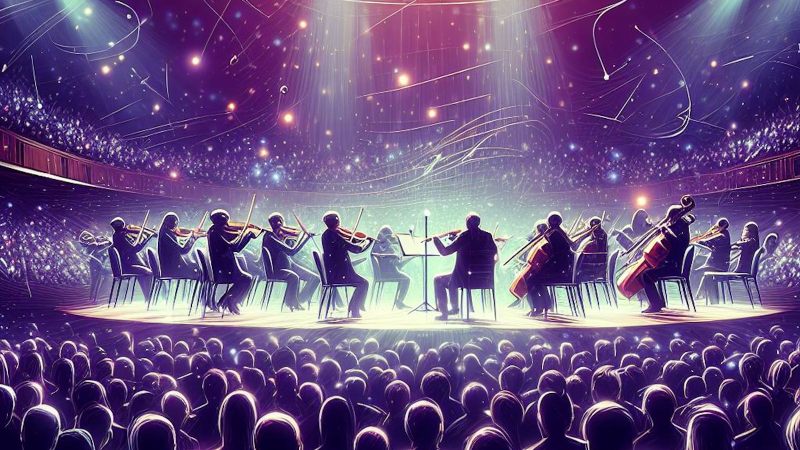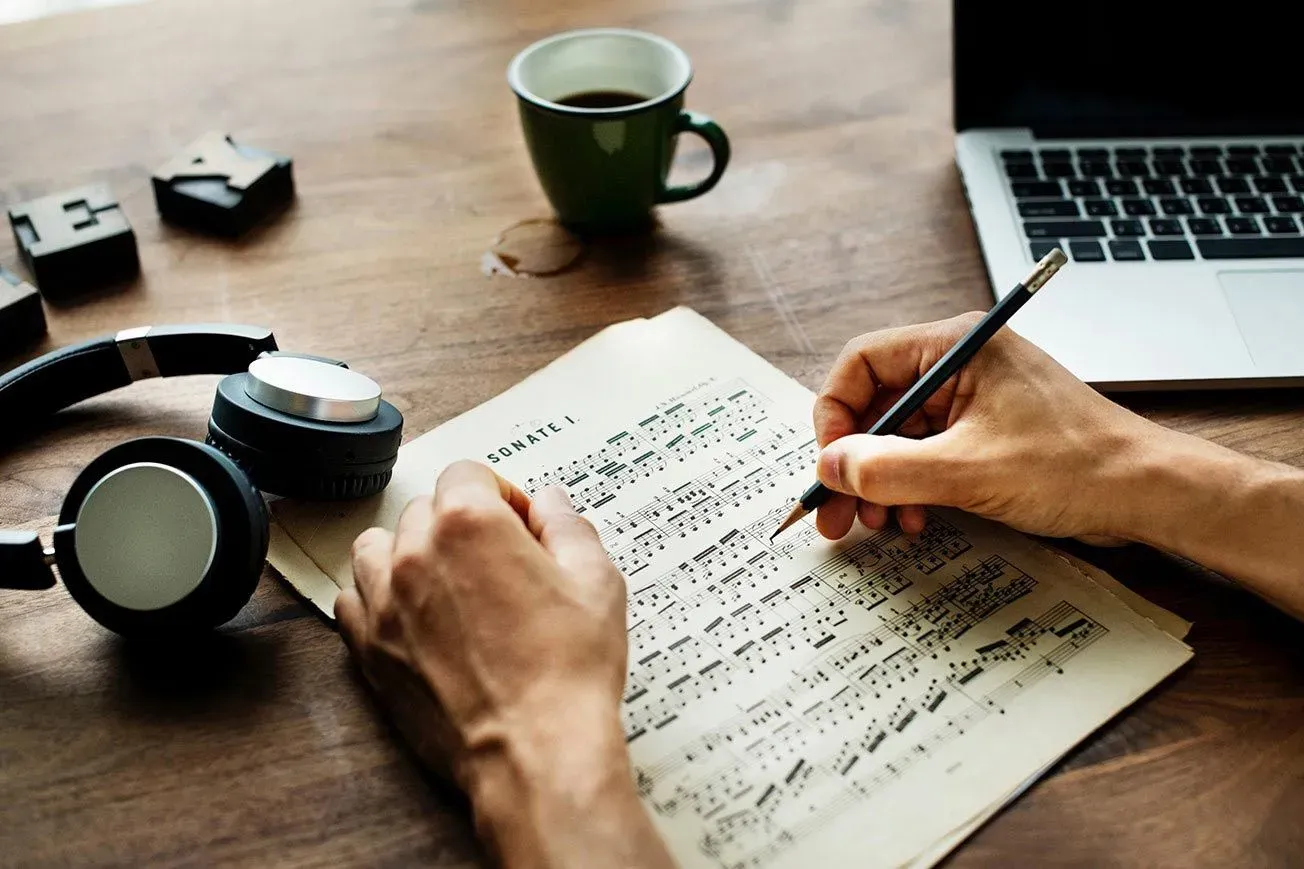In a fusion of timeless harmony and contemporary spirit, modern classical music weaves the old with the new. This genre, steeped in history, now embraces the textures of today's world.
Whether you are a seasoned composer or a curious enthusiast, the journey to create such music is a testament to both dedication and innovation.
Let's unveil the nuances of crafting modern classical compositions in our current soundscape.

The Continuous Crescendo: Evolution of Classical Music
Classical music, a genre that resonates through the ages, represents a rich tapestry of cultural expression and technical prowess.
The journey from baroque complexity to the modern classical music scene is both expansive and profound, reflecting a continuous crescendo of artistic evolution.
From Gregorian Chants to Symphonic Waves
The origins of classical music are deeply rooted in the religious and royal courts of Europe, where Gregorian chants and medieval harmonies set the stage.
As we moved through the Renaissance and into the Baroque era, music saw an increase in complexity and ornamentation.
The classical period streamlined this complexity, bringing about a clarity and balance that were revolutionary in their simplicity.
With the Romantic era, emotion and individual expression reigned, leading to larger orchestras and more expansive compositions.
The 20th Century: A Melodic Mosaic
The 20th century witnessed a remarkable transformation and creativity in the realm of classical music. Composers such as Stravinsky and Schoenberg ventured beyond conventional tonal boundaries, whereas counterparts like Rachmaninoff maintained a firm grasp on the remnants of Romantic-era expression.
This period introduced experimental textures and structures that challenged listeners' expectations and expanded the language of classical music beyond its established borders.
Modern Classical Music: Blending the Old with the New
Today, modern classical music stands on the shoulders of these giants, taking the foundational elements of its predecessors and infusing them with the spirit of our times.
This modern iteration honors the past while boldly experimenting with new forms and technologies.
Composers interweave electronic sounds with acoustic instruments, incorporate global music influences, and often engage with multimedia elements to enhance the listening experience.
Technology's Role in Tradition
Advances in technology have significantly influenced the progression of classical music. The emergence of the piano ushered in new horizons for keyboard compositions, while contemporary innovations, such as synthesized sounds, have considerably expanded the toolkit for composers.
Audio production techniques have advanced, enabling the creation of intricate and polished pieces that might have been impossible in earlier times.
The Symphony of Tomorrow
Looking forward, modern classical music continues to evolve, driven by both technological advancements and the ever-changing cultural landscape. The genre remains a living, breathing form of art that refuses to stagnate.
As modern composers write the next chapters of this enduring legacy, they carry forward the tradition of innovation that has always been at the heart of classical music.
The evolution of classical music is a testament to humanity's relentless pursuit of artistic expression. It is a journey marked by gradual enhancement and revolutionary change, a true continuous crescendo that mirrors the progress of society itself.
Composing Today: The Fabric of Modern Classical Music
In the realm of modern classical music, the creative landscape is as diverse as it is innovative, woven from a myriad of influences and techniques that defy the simplistic categorization of the past.
Composers today are not only musicians but alchemists who blend historical practices with cutting-edge concepts, creating a fabric that is intricate and rich with modernity.
Defining the Sound of Now
The defining characteristics of modern classical compositions are as varied as the composers themselves. This era is marked by a fearless approach to sound and structure, where dissonance might be as welcome as harmony, and silence can be as compelling as sound.
There's a willingness to experiment with unconventional instruments and digital enhancements, blurring the lines between acoustic purity and electronic innovation.
The Minimalist Movement and Its Progeny
Minimalism, with its emphasis on repetition and restraint, has been a significant influence on modern classical music. This style, popularized by composers like Steve Reich and Philip Glass, focuses on the beauty of bare structures and hypnotic patterns.
However, the response of post-minimalism acknowledges these roots while expanding upon them, often incorporating elements of narrative and emotional expressiveness that were less pronounced in pure minimalism.
Accessible Modernism: A Bridge to Audiences
Accessible modernism is an approach that marries the complex ideas of modernist music with a listener-friendly appeal.
This approach embraces complex methods while delivering them in a form that captivates and connects with the listener.
Such a strategy has been instrumental in preserving the relevance of classical music, guaranteeing its appeal to modern audiences without compromising on artistic excellence.
Beginning with a Whisper
Embracing the concept of 'less is more,' some of the most profound pieces of modern classical music begin with the simplest of sounds.
Starting a composition with a singular instrument allows for an intimate conversation with the audience, setting the tone and emotional color palette before expanding into a broader narrative.
The Art of Layering Sounds
Technique is essential when it comes to layering sounds. It's about building from that initial whisper, carefully adding instruments and textures to create complexity without cacophony.
This method requires a delicate balance, as each layer must support and enhance the others, crafting a coherent whole from individual threads of melody and rhythm.
The process of composing in the modern classical music era is about understanding these elements—minimalism, post-minimalism, accessible modernism—and using them as a foundation to build something entirely new.
It's about starting with a single note and skillfully layering until the piece reaches its crescendo, reflecting the depth and breadth of today's musical landscape.

Echoes of Masters: Learning from Modern Maestros
The tapestry of modern classical music is rich with the influences of composers whose innovations have rippled through time, impacting the genre in profound ways.
As aspiring composers and enthusiasts seek to understand the essence of this evolution, studying the masters of modern music becomes an essential pursuit.
1. Stravinsky’s Dissonant Legacy
Igor Stravinsky stands as a colossus in the realm of modern classical music. His fearless forays into dissonance, complex rhythms, and unconventional orchestration set the stage for what could be conceived within the musical canvas.
Pieces like "The Rite of Spring" and "The Firebird" have not only endured but have inspired countless composers to explore beyond traditional boundaries.
Stravinsky’s approach to composition was not just about the notes but the raw energy and emotion they could convey, paving the way for the bold expressions found in modern compositions.
2. Saunders’ Physical Soundscapes
The work of Rebecca Saunders stretches the fabric of classical music even further. Known for her sparse textures and innovative approach to sound, she regards sound almost as a tangible object within a compositional space.
Saunders’ pieces, such as "Flesh and Bone" and "Chant," are distinguished by an acute awareness of silence and the physicality of sound, offering new perspectives on the role of musical instruments and the spaces they resonate in.
Her contributions underscore the importance of considering not just melody and harmony but the very essence of sound in modern classical music.
3. Ammann’s Harmonic Innovations
Dieter Ammann brings a palette that infuses modern classical music with the lushness of harmonies drawn from minimalism and spectralism.
Works like "Passacaglia" and "Moon" showcase his skillful blend of instrumental virtuosity with electronic elements, creating soundscapes that are at once familiar and strikingly original.
Ammann’s compositions resonate with a distinctive clarity and depth, exemplifying how contemporary classical can embrace tradition while innovating relentlessly.
4. Widmann’s Genre-Defying Explorations
Jörg Widmann’s reverence for classical traditions is infused with his penchant for exploring new territories.
His admiration for the likes of Mozart and Schubert is woven into his work, yet pieces such as "Towards Paradise (Labyrinth VI)" for trumpet and orchestra, demonstrate his unyielding quest for contemporary expression.
Widmann's use of diverse instruments and the unique role of the soloist in his compositions offer a fresh narrative on the interplay between classical forms and modern sensibilities.
5. Glass’ Meditative Minimalism
Philip Glass, often hailed as a pioneer of minimalism, has a signature style that combines rhythmic repetition with hypnotic harmonies. From operas like "Einstein on the Beach" to film scores such as "Koyaanisqatsi," his music creates immersive experiences that have attracted a broad audience.
Glass continues to shape the soundscape of modern classical music with compositions that provide a contemplative space for listeners, drawing them into a meditative engagement with music.
The Composer's Canvas: Crafting Your Modern Masterpiece
Embarking on the journey of composing modern classical music can be likened to painting on an aural canvas, where themes, melodies, and rhythms intermingle to create a sonic masterpiece.
This section will delve into the meticulous art of composition in the modern era, highlighting the essential steps and creative considerations that contribute to the birth of a contemporary classic.
1. Conceptualizing the Core: Thematic Inception
Before the first note is set to paper, the modern composer engages in a profound creative process—conceiving a thematic core that will act as the bedrock of the composition.
This thematic inception is the spark from which the entire piece will grow, embodying the emotional, intellectual, and aesthetic essence of the work.
- Developing the Theme: A strong theme is both memorable and flexible, capable of evolution and development. It should encapsulate the intended mood and message of the piece, whether it’s the serene flow of minimalism or the intricate complexity of post-minimalism.
- Motivic Exploration: Short motifs can serve as genetic material, evolving into the larger thematic ideas that will traverse the entire piece, providing coherence and unity.
2. The Art of Orchestration: Painting with Timbres
Orchestration in modern classical music is not merely about assigning notes to instruments; it’s about painting with a palette of timbres.
The modern orchestrator must consider the unique qualities of each instrument and how they can be combined to create new colors and textures.
- Instrumental Characters: Each instrument possesses its own character and sonic signature. The modern composer must be attuned to these nuances, selecting and combining instruments in a way that brings the thematic material to life.
- Innovative Textures: Exploring unconventional instrumental combinations and extended techniques is a hallmark of modern orchestration, allowing composers to tread new auditory paths and push the boundaries of traditional soundscapes.
3. Thematic Development: The Evolution of Ideas
With a theme in place and an understanding of the orchestra’s potential, the composer can begin the process of thematic development—transforming and reimagining the core ideas to maintain interest and propel the music forward.
- Variation Techniques: Through inversion, retrograde, augmentation, diminution, and fragmentation, a theme can be reinterpreted and reinvented, keeping the listener engaged and curious.
- Contrast and Continuity: Balancing repetition and contrast is key to crafting a compelling narrative within music. Juxtaposing the familiar with the unexpected creates a dynamic and captivating aural journey.
4. Orchestral Architecture: Structuring the Sonic Edifice
The structure of a modern classical piece provides the framework within which thematic development and orchestration come together to form a cohesive whole.
Modern composers often experiment with form, creating unique structures that serve their expressive needs.
- Movement and Flow: Attention to the pacing and flow ensures that the music unfolds in a way that is both natural and compelling, leading the listener through a spectrum of emotions and ideas.
- Dynamic Architecture: The careful control of dynamics, from the subtlest pianissimo to the most commanding fortissimo, shapes the emotional landscape of the music, much like light and shadow in a painting.

Empress: A Nod to Modernity in Classical Composition
Although traditional methods of composition hold their charm, Empress brings a touch of modernity to your musical creations. Its sophisticated algorithms can offer insights and enhancements, ensuring your music resonates with today's listeners.
Try Empress today for the best source of inspiration for your next composition!
FAQs:
Q1: What defines modern classical music in comparison to its traditional roots?
Modern classical music often incorporates a wider range of harmonies, rhythms, and textures, and is generally more experimental in nature than traditional classical music which tends to follow stricter forms and stylistic conventions.
Q2: How can I bring a contemporary feel to a classical composition?
To bring a contemporary feel to a classical composition, consider integrating modern elements like extended techniques, electronics, or influences from other musical genres while maintaining classical foundations.
Q3: What are the challenges faced when composing modern classical music?
One of the main challenges in composing modern classical music is balancing innovation with listenability, ensuring the music remains engaging and coherent while pushing creative boundaries.
Q4: How important is the understanding of music theory in modern composition?
A solid understanding of music theory is important in modern composition as it provides the tools to manipulate traditional structures creatively and to communicate ideas effectively with performers.
Q5: Where can I find inspiration for my modern classical compositions?
Inspiration for modern classical compositions can be found in a variety of sources, from the natural world and personal emotions to cutting-edge technology and other art forms, including contemporary visual arts and literature.
Follow the future of music with Empress. Check out our blog to learn how you can effectively use these AI music tools.


